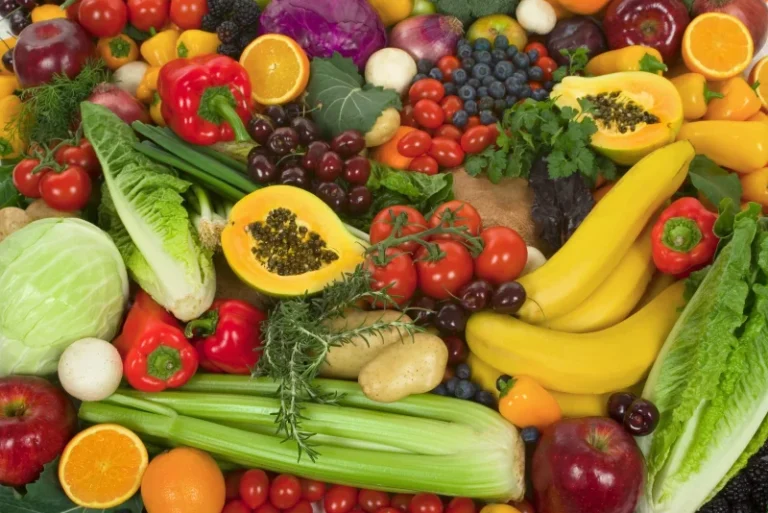The dirty dozen is a term used to describe fruits and vegetables that should be eaten in moderation because they contain high levels of pesticides.
The USDA has created a list of these 12 foods, which include apples, bell peppers, celery, strawberries, peaches, nectarines, cherries, spinach, lettuce, tomatoes, potatoes, sweet corn, and pears.
These foods should be consumed in moderation because they contain higher amounts of pesticide residue than other produce.
Table of Contents
But what do higher pesticide amounts mean?
Fruit is delicious, nutritious, and healthy, but many of us aren’t aware of the pesticides we consume every day. According to the Environmental Working Group, our bodies absorb over 100 different types of pesticides through food each week. These chemicals can accumulate in our fat cells, causing health problems later in life.
It means that eating these foods regularly can increase your risk of developing certain diseases, such as cancer, diabetes, and heart disease.
What Are The Risks Associated With Consuming These Foods?
According to the Environmental Working Group (EWG), these 12 foods account for nearly half of the total pesticide residues found in our food supply.
And according to the EWG, these foods are among the most contaminated.
In fact, the EWG ranked these 12 foods as being among the top 10 most contaminated.
This is based on their analysis of data collected between 2002 and 2012.
And here’s a breakdown of the results:
- Apples – 1st place
- Bell Peppers – 2nd place
- Celery – 3rd place
- Strawberries – 4th place
- Nectarines/Peaches – 5th place
- Cherries – 6th place
- Spinach – 7th place
- Lettuce – 8th place
- Tomatoes – 9th place
- Potatoes – 10th place
- Sweet Corn – 11th place
- Pears – 12th place
So, if you want to reduce your risk of getting sick from consuming these foods, then it’s important to know how much pesticide residue is present in them.
ALSO READ
How Much Pesticide Residue Is In Each Food?
To determine this, the EWG analyzed more than 20 years worth of data provided by the U.S. Department of Agriculture (USDA).
They looked at the amount of pesticide residue found in each food, including all types of produce.
And here‘s a breakdown of the findings:
- Apples – 14% of samples contained detectable levels of pesticide residue.
- Bell Peppers – 13% of samples contained detectable levels of pesticide residue.
- Celery – 15% of samples contained detectable amounts of pesticide residue.
- Strawberries – 17% of samples contained a detectable amount of pesticide residue.le
- Nectarines/ Peaches – 18% of samples contained detectable amounts of pesticide residue.ce
- Cherries – 19% of samples contained detectable levels of pesticide residue.
- Spinach – 21% of samples contained detectable levels of pesticide residue.
- Lettuce – 22% of samples contained detectable concentrations of pesticide residue.
- Tomatoes – 23% of samples contained detectable concentrations of pesticide residue.t
- Potatoes – 24% of samples contained detectable concentrations f pesticide residue.
- Sweet Corn – 25% of samples contained detectable contents of pesticide residue.
- Pears – 26% of samples contained detectable contents of pesticide residue.
Based on these results, the average amount of pesticide residue found per serving was 0.16 milligrams.
That’s about one-sixteenth of an ounce.
If you were to eat just one apple or pear every day, you would have to consume approximately five pounds of fruit to reach the maximum daily limit set by the EPA.
How to Avoid the Ill Effects of The Dirty Dozen?
To avoid these harmful effects, try eating organic fruit and vegetables whenever possible. Organic foods are grown without the use of synthetic fertilizers, herbicides, fungicides, or other toxic substances. In addition, organic farmers apply natural pest control methods, such as crop rotation and cover crops, to prevent soil erosion and build healthier soils.
Organic foods are also free from genetically modified organisms (GMOs), which are created by inserting genes from other species into plants and animals. GMOs are controversial because they could potentially harm human health and the environment. For example, studies have shown that GMO corn causes birth defects in rats.
If you do have to consume vegetables and fruits you feel might be exposed to pesticides, you should consider effective ways to remove pesticides from produce. You can read more about it in this article, “Remove Pesticides from Fruits and Vegetables“.
In conclusion, produce is often overlooked as a source of nutrition. However, it’s actually one of the most nutritious foods around. In fact, fruits and vegetables contain over 100 nutrients that help keep our bodies strong and healthy.
The Dirty Dozen list was created by the Environmental Working Group (EWG) to highlight which twelve fruits and vegetables are the most contaminated by pesticides. These include apples, celery, sweet bell peppers, strawberries, peaches, nectarines, pears, spinach, kale, lettuce, potatoes, and imported grapes. While these items aren’t necessarily bad for you, they are definitely high on the EWG’s list of least healthy choices. So if you want to avoid pesticide exposure, make sure you buy organic versions of these foods whenever possible.
Source – EWG
RELATED ARTICLES:

